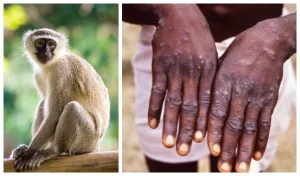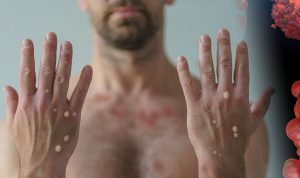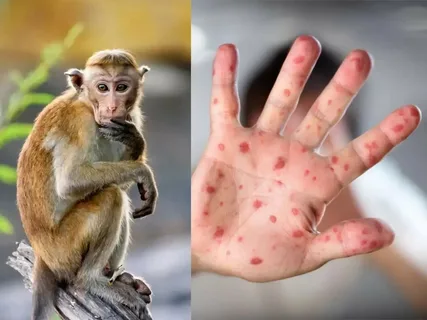Introduction Monkeypox, a viral disease, though relatively rare, can be a cause of concern for parents due to its potential severity, especially when it affects children. Understanding the nature of this illness, its symptoms, and the necessary preventive measures is crucial for parents to protect their children effectively. Understanding Monkeypox Transmission and Symptoms Monkeypox is
Introduction
Monkeypox, a viral disease, though relatively rare, can be a cause of concern for parents due to its potential severity, especially when it affects children. Understanding the nature of this illness, its symptoms, and the necessary preventive measures is crucial for parents to protect their children effectively.
Understanding Monkeypox
Transmission and Symptoms
Monkeypox is primarily transmitted to humans from animals, with rodents and primates serving as the primary carriers. The symptoms often manifest within 5 to 21 days after exposure, starting with flu-like symptoms such as fever, headache, muscle aches, and exhaustion. These symptoms are typically followed by the development of a rash, which progresses from raised bumps to fluid-filled blisters before crusting over.
Difference from Smallpox
Monkeypox bears similarities to smallpox in terms of symptoms, but it tends to be less severe. However, severe cases can occur, especially in individuals with weakened immune systems, including children. Unlike smallpox, which has been eradicated, Monkeypox remains a concern, particularly in regions where the virus is endemic.

Image by: yendex.com
Monkeypox in Children
Vulnerability
Children are particularly susceptible to Monkeypox due to their developing immune systems and frequent interactions with potential carriers, such as pets or wildlife. Their innate curiosity and tendency to explore their surroundings increase the risk of exposure to the virus.
Symptoms in Children
In children, Monkeypox symptoms may present similarly to those in adults but can be more pronounced. Parents should be vigilant for signs such as high fever, rash, swollen lymph nodes, and respiratory symptoms. Prompt identification and treatment are essential for managing the illness effectively and preventing complications.

Image by: yendex.com
Precautions for Parents
Vaccination Importance
Vaccination is one of the most effective preventive measures against Monkeypox. Ensuring that children receive the recommended immunizations, including the smallpox vaccine, can significantly reduce their risk of contracting the disease. Additionally, staying up to date with routine vaccinations helps strengthen overall immunity, providing added protection against infectious diseases.
Hygiene Practices
Promoting good hygiene practices is essential in preventing the spread of Monkeypox and other contagious illnesses among children. Encouraging frequent handwashing with soap and water, especially after outdoor activities or contact with animals, helps remove potential pathogens from the skin and reduces the risk of transmission.

Image by: yendex.com
Contact Avoidance
Educating children about the importance of avoiding contact with wild animals, particularly rodents, is crucial. Direct contact with infected animals or their bodily fluids increases the likelihood of contracting Monkeypox. Teaching children to appreciate wildlife from a safe distance and avoid handling or petting unfamiliar animals reduces their risk of exposure to infectious agents.
Debunking Myths
Misconceptions
Various misconceptions surround Monkeypox, leading to misunderstandings about its transmission, severity, and prevention. Dispelling these myths through accurate information dissemination is essential in combating misinformation and fostering informed decision-making among parents and caregivers.
Treatment Options
Medical Care
While there is no specific treatment for Monkeypox, supportive care plays a crucial role in managing symptoms and preventing complications. Medical interventions such as antiviral medications may be prescribed in severe cases to alleviate symptoms and reduce the duration of illness. Additionally, adequate rest, hydration, and symptomatic relief measures help support the body’s natural immune response and promote recovery.
Home Remedies
In mild cases of Monkeypox, home remedies can complement medical treatment and alleviate discomfort. Simple measures such as applying cool compresses to the rash, maintaining hydration, and taking over-the-counter pain relievers can help alleviate symptoms and promote comfort during recovery. However, it’s essential to consult healthcare professionals before administering any home remedies, especially in children, to ensure safety and effectiveness.

Image by: www.stylecraze.com
Monkeypox Prevention
Community Awareness
Raising awareness about Monkeypox within the community is essential for promoting preventive measures and early detection. Educational campaigns highlighting the signs and symptoms of Monkeypox, along with recommended preventive actions, empower parents and caregivers to protect themselves and their children effectively.
Surveillance Measures
Health authorities implement surveillance measures to monitor Monkeypox outbreaks and track the spread of the virus. Early detection of cases allows for prompt intervention and implementation of control measures to prevent further transmission within communities. Timely reporting of suspected cases and adherence to public health guidelines facilitate efficient containment efforts and reduce the risk of widespread outbreaks. Explore More About (Heart Health)
| Aspect | Smallpox | Monkeypox |
|---|---|---|
| Causative Agent | Variola virus | Monkeypox virus |
| Origin | Likely originated in Africa | Discovered in laboratory monkeys in 1958, primarily found in Central and West Africa |
| Transmission | Human-to-human contact, respiratory droplets, contaminated objects | Similar to smallpox; human-to-human transmission, contact with infected animals |
| Incubation Period | Around 12 to 14 days | 5 to 21 days |
| Initial Symptoms | Fever, malaise, headache, severe backache, rash | Fever, headache, muscle aches, fatigue |
| Rash | Starts on face and extremities, spreads to trunk; progresses from macules to papules to pustules | Begins on face and spreads to other parts of the body; evolves into raised bumps filled with fluid |
| Mortality Rate | Historically high, up to 30% | Lower than smallpox, typically less severe; mortality rate varies |
| Vaccination | Smallpox vaccine available, eradicated globally | No specific vaccine for monkeypox; smallpox vaccination may provide some cross-protection |
| Global Eradication | Eradicated in 1980 | Cases still reported, primarily in Central and West Africa |
| Prevention | Vaccination, isolation of cases, contact tracing | Hand hygiene, avoiding contact with wild animals, respiratory hygiene |
Conclusion
In conclusion, Monkeypox poses a potential threat to children’s health, necessitating proactive measures from parents and caregivers to mitigate its impact. By understanding the transmission dynamics, recognizing symptoms, and implementing preventive strategies such as vaccination, hygiene practices, and contact avoidance, parents can effectively safeguard their children against Monkeypox. Additionally, dispelling myths and misconceptions surrounding the disease promotes informed decision-making and fosters a collective effort in preventing its spread within communities.
















